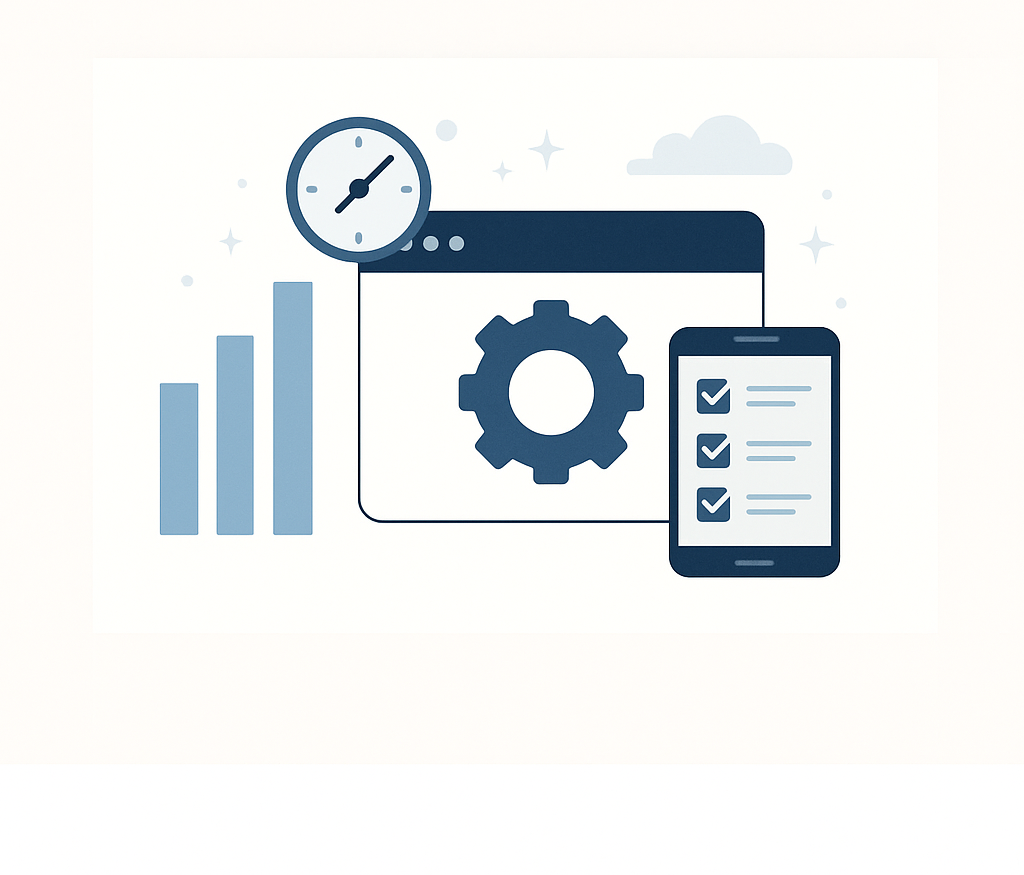AI is no longer just answering questions — it’s thinking, planning, and executing tasks on its own. Welcome to the era of AI agents, powered by advanced architectures like ReAct, AutoGPT, and BabyAGI.
These frameworks are redefining how large language models (LLMs) go beyond conversation and into action-driven autonomy. Whether you’re building a personal AI assistant, automating research, or testing autonomous systems, understanding these architectures is essential.
Let’s break down what each agent does, how they differ, and where they fit in your AI stack.
If you’re just getting started with AI agents, check out Beginner’s Guide to AI Agents: Smarter, Faster, More Useful.
1. The Foundation: What Is an AI Agent?
An AI agent is an autonomous system powered by LLMs that can reason, plan, and take actions toward a defined goal.
Unlike static chatbots, agents:
- Remember past steps
- Use external tools or APIs
- Make iterative decisions
- And often manage multiple sub-tasks without human input
Essentially, they move from single prompt → single output to goal → dynamic multi-step process.
For a closer look at why this matters, read How to Adopt the Agentic AI Mindset in 2025.
2. ReAct: The Reasoning + Acting Framework
Developed by: Google Research (2022)
Core Idea: Combine reasoning steps (“thoughts”) and actions (“tool use”) in a single loop.
ReAct (short for Reason + Act) gives AI the structure to think through problems before taking steps. It alternates between:
- Thought: “I need to check today’s date.”
- Action:
use_tool(calendar) - Observation: “The date is November 5.”
- Next Thought: “Now I can schedule the post.”
This architecture keeps the AI’s chain of thought visible, improving transparency and debugging — especially when paired with prompt chaining techniques from Prompt Chaining Made Easy: Learn with Real-World Examples.
Where it shines:
✅ Ideal for controlled, tool-based tasks (search, file management, analysis).
✅ Easier to monitor and audit than fully autonomous systems.
3. AutoGPT: The First Fully Autonomous GPT Agent
Created by: Toran Bruce Richards (2023)
Core Idea: Use GPT to plan, act, and evaluate — all by itself.
AutoGPT broke the internet when it launched, thanks to its ability to set sub-goals automatically. It uses:
- A main LLM (like GPT-4) for reasoning and decision-making.
- A memory module for context retention.
- An execution loop that repeats until goals are achieved.
Example:
Goal: “Grow my Twitter account to 10k followers.”
AutoGPT → breaks it down into research, content ideas, post scheduling, and analytics — executing each autonomously.
This is a major step toward self-directed AI workflows, similar to what you can build manually using ChatGPT and Zapier.
Where it shines:
✅ Complex multi-step goals
✅ Business automation and data-driven experiments
✅ Agents that can adapt over long sessions
Limitations:
⚠️ Expensive to run (lots of API calls)
⚠️ Prone to “looping” or goal confusion
If you want a structured way to tame that chaos, check Prompting for Autonomy: Designing Better Prompts for AI Agents.
4. BabyAGI: The Task-Oriented Memory Agent
Created by: Yohei Nakajima (2023)
Core Idea: Create, prioritize, and execute tasks dynamically with persistent memory.
BabyAGI is a task management system for AI — it builds a list of things to do, executes them, and learns from the results.
How it works:
- Creates tasks based on a high-level goal
- Prioritizes them dynamically
- Executes the next best one
- Stores outcomes for future reference
Think of it as AutoGPT’s leaner, more organized cousin.
It’s especially effective when combined with vector databases, which keep semantic memories. Learn how they work in Vector Databases Simplified: Chroma, Pinecone, Weaviate.
Where it shines:
✅ Long-term planning
✅ Research agents
✅ AI project managers
5. Comparing the Architectures Side-by-Side
| Feature | ReAct | AutoGPT | BabyAGI |
|---|---|---|---|
| Autonomy Level | Guided | Fully autonomous | Semi-autonomous |
| Memory | Short-term | Long + contextual | Persistent, structured |
| Best For | Tool integration, reasoning | Multi-step goal execution | Task planning & research |
| Transparency | High | Medium | Medium |
| Example Use | Data analysis bots | Business automation | Research assistant |
For creators building no-code systems, these can also integrate with automation tools — check No-Code AI Agents: Replit and Claude Make It Simple.
6. The Agentic AI Era: Why It Matters
AI is evolving from reactive tools to proactive collaborators.
Agents like ReAct, AutoGPT, and BabyAGI are laying the foundation for agentic ecosystems — networks of AI entities that cooperate and share context.
As these architectures mature, expect:
- Smarter workflows that auto-correct and self-optimize
- AI copilots with persistent memory and reasoning chains
- Multi-agent collaboration systems for teams and enterprises
To explore this shift, read Big Tech and Agentic AI: What It Means for You.
7. Choosing the Right Architecture for You
If you’re:
- A developer → Start with ReAct for transparency.
- A startup or researcher → Experiment with BabyAGI for project loops.
- A no-code builder → Try AutoGPT with Zapier or Replit integrations.
And remember — prompt precision determines performance. Before diving in, refine your prompting strategy with 7 Proven ChatGPT Techniques Every Advanced User Should Know.
Conclusion
ReAct, AutoGPT, and BabyAGI aren’t competing — they’re complementary blueprints shaping the next generation of autonomous systems.
ReAct gives structure, AutoGPT brings autonomy, and BabyAGI adds memory and adaptability. Together, they form the backbone of agentic AI — systems that don’t just respond, but reason, plan, and grow.
The age of passive AI is over. The age of AI teammates has begun.
For your next read:



